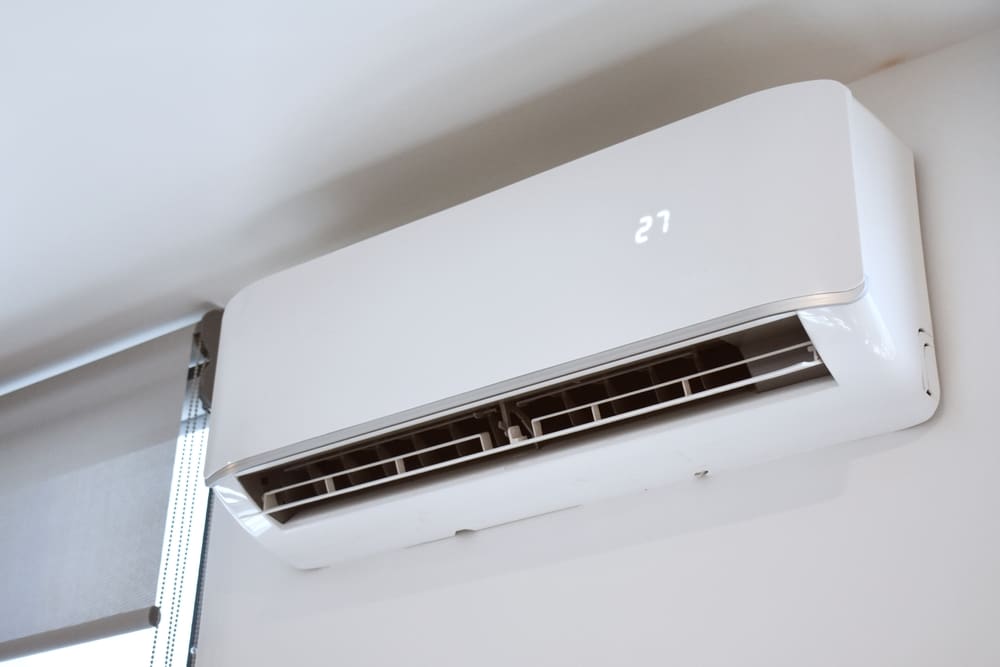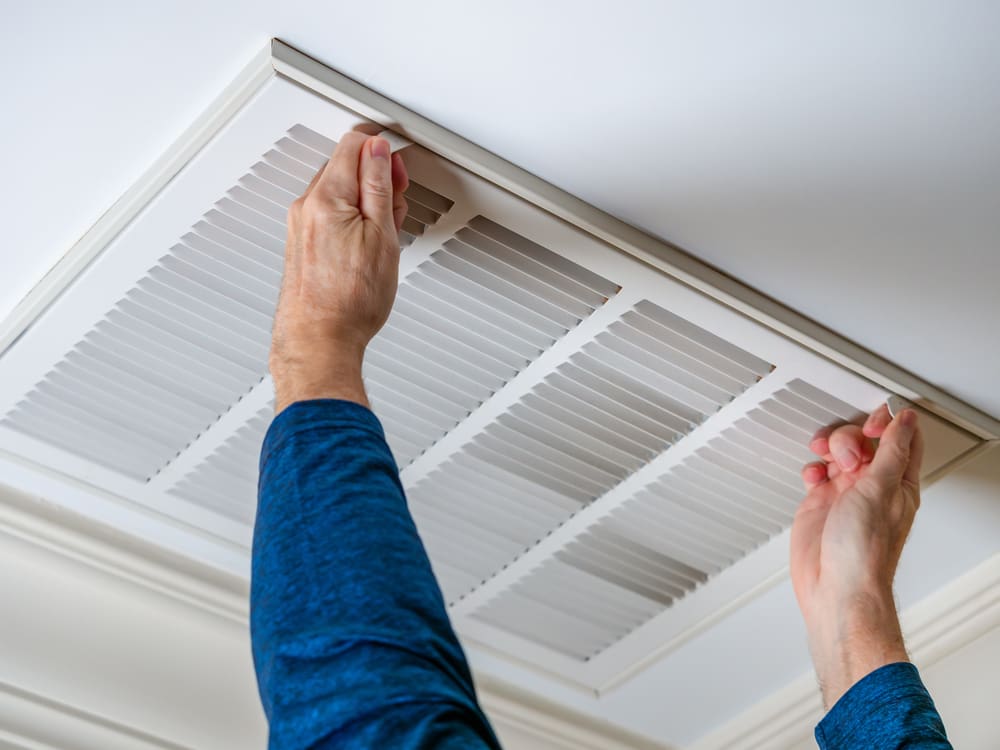
Looking to beat the heat and find the most optimal cooling solution for your home before the summer hits? You have many options when it comes to the right air conditioner unit, such as central AC vs. mini split.
While both systems operate effectively to deliver cool air, their installation, convenience, and integration into your home vary. Deciding what system is best can quickly become overwhelming without accurate, clear knowledge from HVAC professionals.
BEST Air Conditioning Plumbing Repair is here to help you make the best decision for your cooling needs, and we’ll be there for expert installation when you’re ready.
This guide is designed to help you understand what a central AC system and mini-split system are and the different pros and cons each brings to help you make the most informed decision on the path to optimal comfort in your home.
Understanding How Central AC and Ductless Mini-Splits Operate
Both central air conditioning and mini-split systems use an outdoor compressor and indoor air handler to cool your home. The key difference is that central AC relies on ductwork, while mini-splits do not.
- Mini-split systems circulate refrigerant through copper lines to individual indoor units, which cool rooms directly—ideal for targeted comfort without ducts.
- Central AC systems use a single indoor unit that pushes cooled air through ductwork, distributing it evenly throughout the home.
Each system offers unique advantages, depending on your home’s layout, cooling needs, and energy efficiency goals.
Exploring Central Air Conditioning Systems
Central AC systems are a common feature in most modern homes. They typically consist of one indoor unit and one outdoor unit, placed in your garage, basement, or utility closet out of sight.
Using a powerful blower fan, central AC distributes cooled air through a network of ducts that run through walls, floors, and ceilings to maintain consistent temperatures throughout the home.
Advantages of Central Air Conditioning
Central AC is one of the more common cooling systems found in most homes today, due to pre-installed ductwork that makes implementing these systems convenient and cost-effective.
✅ Installation Cost
In the case your home already has ductwork, it’s not required to have a professional install it, saving you time and money. You will only need to install a single indoor unit for your entire home, rather than a single unit for each room that needs cooling.
✅ Heating Effectiveness
Central AC allows you to control both heating and cooling across your entire home from a single, centralized thermostat. This can simplify climate management and ensure consistent comfort in every room.
✅ Invisibility
Because central AC systems rely on ducts and a single indoor unit that’s typically hidden, they blend seamlessly into your home’s design. There are no visible wall-mounted units, giving your living space a cleaner, less cluttered appearance.
Central Air Conditioning Cons
While central air provides many advantages in cost, convenience, and indoor air quality, there are still a few shortcomings to consider.
❌ Not As Energy Efficient
Although central air systems can be energy efficient, they typically top out around 26 SEER. In contrast, ductless mini-split systems can reach up to 42 SEER.
❌ Less Precise Heating and Cooling
Central air provides uniform heating and cooling, but it lacks the zone-specific control found in ductless systems. This can lead to uneven temperatures or wasted energy in rooms that aren’t being used.
❌ Potential Costs Associated With Ductwork
If your home is not already equipped with ductwork, adding it can be quite a financial investment and tends to be a more invasive process.

Ductless Mini Splits
Ductless mini-splits are very similar to central AC in how they deliver cooling or heating throughout your home. However, unlike central air, mini-splits require an indoor unit in each room that needs conditioned air, often mounted on the wall, under the ceiling, or on the floor.
Ductless mini-splits are often selected because they offer a more customizable approach to cooling, giving control over each room’s temperature rather than the entire home as a whole.
Ductless Mini Splits Pros
Ductless mini-splits are the perfect option for older homes without pre-installed ductwork or if you’re looking for a zoned-cooling approach for individual rooms. They offer a minimally invasive installation and a customized, energy-efficient cooling option for your home over Central AC.
✅ Temperature Control with Mini-Splits
This system can heat or cool each room in your home individually as needed, using different temperature controls and settings for every room. Additionally, they are used as a companion to central AC for rooms that may need additional cooling.
✅ Energy Efficiency of Ductless Mini-Splits
Ductless mini-splits have enhanced energy efficiency over ducted AC systems, even helping you save money on energy costs in the long run.
✅ Simple Installation of Ductless Mini-Splits
Because the system does not require ducts, the installation process is much less invasive and extensive. Ductless mini-splits also have a long refrigerant line capability and compact indoor and outdoor units, streamlining the installation process even more.
Disadvantages of Ductless Mini-Splits
While ductless mini-splits are advantageous in their zoned cooling and energy efficiency, there are still a few challenges to consider:
❌ Installation Costs
Installation for mini-splits typically costs more than central AC systems since they require specialized equipment and installation materials.
❌ Worse Air Filtering
The air filters in ductless mini-splits are not nearly as effective as those in ducted filtration systems. You can opt for carbon inserts or air purifiers to help with filtration issues, but each system’s inherent zoning limits these and may require frequent replacement.
❌ Visibility
Because mini-splits’ indoor units are mounted on the floor, ceiling, or wall, they are easily visible. This is not an ideal option for homeowners concerned with how their AC system may disrupt the aesthetics of their home.
Deciding Between Central AC and Ductless Mini-Splits
If you’re in the market for a new AC system, how do you know if you’re making the right choice between central AC vs. mini-splits?
The right system depends on your home’s specific cooling needs and characteristics. However, the professionals at BEST Air Conditioning Plumbing Repair recommend considering the following things when selecting your AC system:
- Do you have existing ductwork? If you have existing ductwork, it’s most cost-effective to opt for a central AC system. If you have no ductwork, it will be cheaper and less invasive to install a ductless mini-split.
- Are you okay with having your AC system visible? A central AC is invisible indoors—a ductless mini-split is not.
- What is your home size? If your home is over 2,500 square feet, a central AC is best. For homes under 2,000 square feet, consider ductless.
- Is your household sensitive to noise? Generally, ductless systems will run quieter than central systems.
- What is your budget? Typically, central AC systems will run a bit more expensive than ductless systems for comparable models.
- Is energy efficiency a priority? The highest-quality ductless systems have higher energy potential than central AC systems.
- Do you need individual room temperature control? If some rooms in your home have specific heating or cooling needs, a ductless mini-split system is perfect for you.
- Do you require supplemental heating? Ductless systems can also function as a ‘heat pump’, delivering warm air inside when needed.
For Central AC or Ductless Mini-Splits Installation Service, Contact BEST Air Conditioning Plumbing Repair
When you’re ready to enjoy reliable, efficient cooling tailored to your home’s needs, trust the experts at BEST Air Conditioning Plumbing Repair.
Whether you’ve already chosen between central AC and ductless mini-splits—or need help making the right decision—our experienced technicians are here to provide precise, professional installation you can count on. Call us today at (702) 970-4911.

